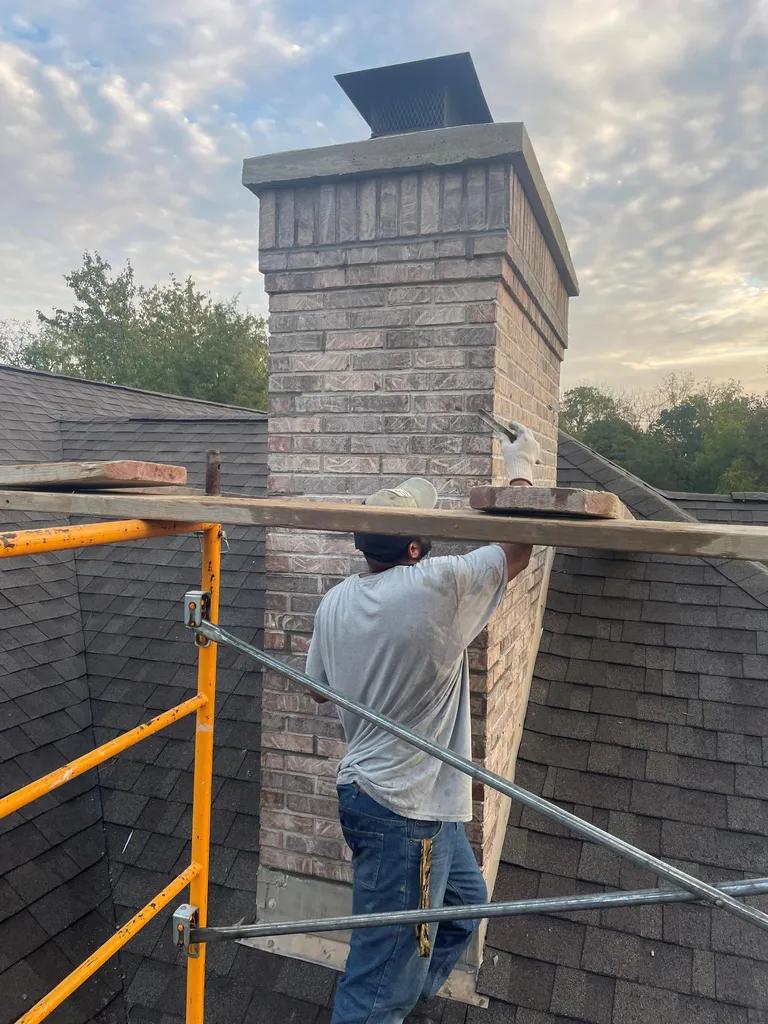Water leaks in chimneys can be a frustrating and potentially damaging issue for homeowners in Kentucky. Not only can they cause structural damage to the chimney itself, but they can also lead to water damage within the home. In this article, we will discuss common causes of water leaks in chimneys in Kentucky and provide tips for troubleshooting and addressing this issue. Understanding the source of the leak is the first step in preventing further damage and ensuring the safety and integrity of your home.
Table of Contents
- Common Causes of Water Leaks in Kentucky Chimneys
- Key Signs to Identify a Chimney Water Leak Issue
- Steps to Effectively Troubleshoot and Repair Water Leaks in Chimneys in Kentucky
- Q&A
- Wrapping Up

Common Causes of Water Leaks in Kentucky Chimneys
Water leaks in Kentucky chimneys can be a common issue that homeowners face, especially during the rainy season. There are several factors that can contribute to water leaks in chimneys, causing damage to the structure and potentially leading to costly repairs. By understanding the common causes of water leaks in chimneys, you can better troubleshoot and address the issue before it escalates.
Some include:
- Cracked Crown: The chimney crown is a concrete slab that sits on top of the chimney, protecting it from water damage. Cracks in the crown can allow water to seep in.
- Missing or Damaged Flashing: Flashing is a thin metal strip that prevents water from entering the juncture between the chimney and the roof. If the flashing is missing or damaged, water can easily infiltrate the chimney.
- Cracked Masonry: Cracks in the chimney masonry can provide an entry point for water, leading to leaks inside the chimney structure.

Key Signs to Identify a Chimney Water Leak Issue
If you suspect that your Kentucky chimney is experiencing a water leak, there are several key signs to look out for. One of the most obvious signs is water dripping or pooling inside the chimney. If you notice water stains on the walls or ceiling near the chimney, this could indicate a leak. Another common indication of a water leak is a musty odor coming from your fireplace.
Additionally, if you see white staining, known as efflorescence, on the exterior of the chimney, this could be a sign of water penetration. Cracked or deteriorating mortar joints, as well as rusted or damaged chimney flashing, are also potential indicators of a water leak. It is crucial to address chimney water leaks promptly to prevent further damage to your home and chimney structure.

Steps to Effectively Troubleshoot and Repair Water Leaks in Chimneys in Kentucky
When dealing with water leaks in chimneys in Kentucky, it’s crucial to follow a systematic approach to troubleshoot and repair the issue effectively. Here are some steps to help you tackle this common problem:
- Inspect the chimney structure: Start by visually examining the exterior of the chimney for any signs of damage, cracks, or missing bricks. Check the chimney cap and flashing for gaps or deterioration that could be allowing water to seep in.
- Evaluate the chimney’s surroundings: Look at the roof above the chimney for any potential sources of water pooling or drainage issues that could be contributing to the leak. Ensure that gutters and downspouts are clear and functioning properly to direct water away from the chimney.
Q&A
Q: What are some common signs of a water leak in a chimney?
A: Some common signs of a water leak in a chimney include water stains on the walls or ceiling around the fireplace, musty odors, dampness or mold growth in the fireplace, and rust or corrosion on the fireplace doors or damper.
Q: What are the potential causes of water leaks in a chimney?
A: Potential causes of water leaks in a chimney can include missing or damaged chimney caps, cracked or deteriorating masonry, damaged flashing, improper chimney construction, or issues with the chimney liner.
Q: How can I troubleshoot and identify the source of a water leak in my chimney?
A: To troubleshoot and identify the source of a water leak in your chimney, you can inspect the chimney cap, check for any cracks or damage in the masonry, examine the flashing for signs of wear or damage, and inspect the chimney liner for any issues. It is also recommended to have a professional chimney sweep and inspector conduct a thorough inspection.
Q: What steps can I take to prevent water leaks in my chimney?
A: To prevent water leaks in your chimney, it is important to have a properly installed and maintained chimney cap, ensure that the masonry is in good condition and repair any cracks or damage, have the flashing inspected and repaired if needed, and have the chimney liner inspected and maintained regularly.
Q: When should I seek professional help for a water leak in my chimney?
A: If you are unable to identify the source of a water leak in your chimney, if the problem persists despite attempting to troubleshoot and make repairs, or if you notice significant water damage or deterioration in your chimney, it is recommended to seek professional help from a qualified chimney sweep or inspector.
Wrapping Up
In conclusion, identifying and addressing water leaks in your Kentucky chimney is crucial to ensuring the safety and longevity of your chimney and home. By following the troubleshooting steps outlined in this article, you can effectively pinpoint and resolve the source of the leak. Remember to always prioritize safety and consult with a professional chimney service if you are unsure about any step in the troubleshooting process. Thank you for reading, and we hope this article has been helpful in addressing your chimney water leak issues.


